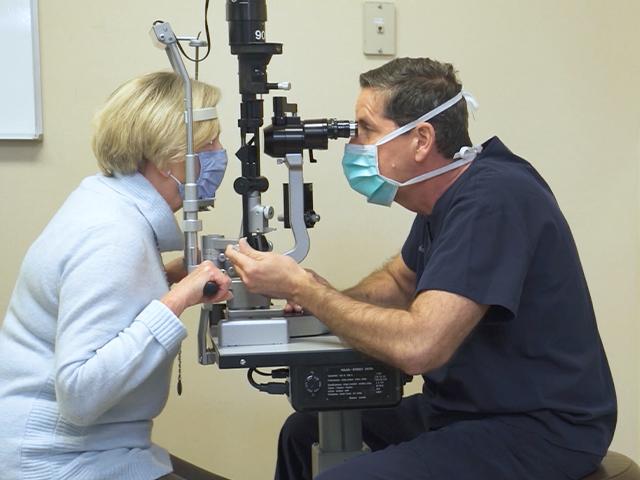
Cataracts go hand-in-hand with a long life. The good news is today’s modern cataract surgery can turn back the hands of time and give us the vision we had when we were young.
Just ask Mary Benson. After undergoing cataract surgery she now feels a sense of renewed joy and zest for life. She said the results were even better than she hoped they would be.
“I never expected to see as well as I do today,” she told CBN News.
Everyday objects that used to appear blurry and dull now look sharp and vivid.
“Just following the surgery I was able to see colors so much more brightly. The bathroom sink was so white!” she exclaimed, ” And the Sunday following the surgery, I went to church without glasses or contact lenses and I was able to read the hymnal and the prayer book with no problem whatsoever.”
She first noticed a problem when she could no longer read fine print or do handwork.
“My glasses were not giving me the help I needed, my contacts weren’t either,” she said, “I felt like I needed something stronger.”
That prompted her to visit Stephen Scoper, M.D., a board-certified, fellowship-trained ophthalmologist and the Vice President of Virginia Eye Consultants.
“Close to 100-percent of us will develop cataracts if we live long enough,” he told CBN News.
Dr. Scoper recommended Mary have her cataracts surgically removed.
“We all have a clear, natural lens in our eyes, right behind the color part of the eye, that focuses light rays onto our retina, just like a camera lens focuses light rays on [the] film of a camera,” he explained, “As we get older that lens gets cloudy. I remove that natural lens and replace it with an artificial lens. So that’s what cataract surgery is.”
Improvements in research and technology put today’s procedures remarkably better than the ones performed just ten or twenty years ago.
“It usually takes me ten minutes or less to do the surgery,” Dr. Scoper said, “No shots or needles, nothing hurts. I put in a numbing eye drop, they look at the light. They don’t see anything or feel anything and in 10 minutes we have the cataract out and the new lens in.”
Dr. Scoper performed the surgery on Pat Robertson after the CBN Founder complained of difficulty reading from a distance.
“Dr. Robertson was a good patient and of course he’s such a delightful individual, such a gentleman. It was a privilege taking care of him. And I tell you, he is one of the youngest 90-year-olds I have ever seen and I see a lot of older patients.”
Since vision loss is gradual, some patients don’t realize how dramatically their eyesight can deteriorate over the years. Dr. Scoper relayed his conversation with Robertson.
“He looked at me and as only he can look at someone, right in my eye, and said, ‘Dr. Scoper, do I really need cataract surgery?’ And so the first thing I did is I quoted Joyce Meyer and said, ‘Dr. Robertson, I know that I know that I know that you need cataract surgery,’ and of course, he laughed and raised his hands and slapped his knees and said, ‘OK let’s do it’ and the rest is history,” he laughed.
Most cataract surgeries are performed in an outpatient surgery center, not a hospital.
So while blurry, cloudy, muted-colored vision is a natural part of aging, it can be reversible with cataract surgery. Now if only the other problems associated with getting older were as easy to fix!
The remainder of this article is available in its entirety at CBN